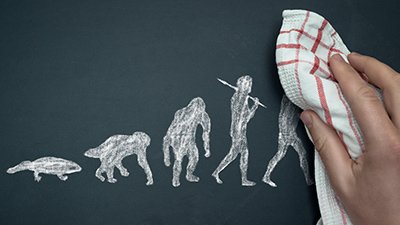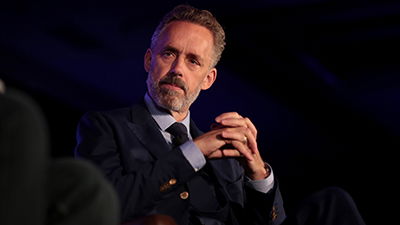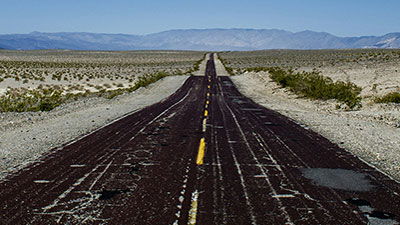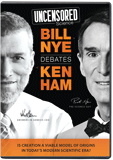
Book Review: Inside the Nye Ham Debate
On February 4th, 2014, on a stage in Petersburg, Kentucky, Bill Nye and Ken Ham were involved in one of the most important debates in the last few decades. Even though one of the debaters (Bill Nye) would strongly argue this point, it really was a debate between atheism/agnosticism/secular humanism and biblical Christianity. The agreed-upon topic was “Is Creation a Viable Model of Origins,” but the thrust of the debate from each side respectively was, “Do we ultimately trust in man’s word or God’s word?”
The new book on the debate from Bodie Hodge and Ken Ham, Inside the Nye Ham Debate, delves into the history behind the debate, offers an in-depth review and examination of the debate itself, and responds to Bill Nye’s questions and statements made during the debate. The book follows the format of the debate, with a post-debate perspective from Ken Ham, an appendix including a complete transcript, and two additional appendixes on the age of the earth and the Trinity.
The first section of the book is a brief history of what led to the debate, followed by a point-by-point recap of the debate in its entirety. Bodie inserts several observations about the debate as he recounts each section. The reader gains insights into Ken Ham’s strategy and also learns how Ken refuted many of Bill Nye’s arguments. Bodie also points out areas where Ken was not able to directly respond to Bill’s questions and assertions, due to the structure of the debate; he then highlights responses to those arguments which have been made by creation researchers over the past several years. Bodie also analyzes the debate strategy of Bill Nye and points out that Mr. Nye often failed to acknowledge when his arguments had been addressed and continued to ask the same questions or assert the same things.
Bill Nye’s tactic (even admitted to by Mr. Nye)1 was to throw a bunch of data at Ken Ham, knowing that he would not have time to respond to every point. Bill stated that he was simply using a tactic by the late Dr. Duane Gish against Ken, but this is not accurate and is an unfair characterization of Dr. Gish’s debate stratagem. In reality, Bill Nye’s debate strategy was nothing more than elephant hurling, refusal to acknowledge counterpoints to his arguments, and a decided commitment not to stay on the topic of the debate. Furthermore, he continually tried to frame things in an ad hominem way, referring to biblical creation as “Ken Ham’s model” and creation-affirming Christians as “Ken Ham’s followers.” Bodie Hodge examines these and numerous other strategies of Bill Nye’s during the debate and refutes them one by one.
Bodie also delves into the heart of the debate: the true nature and basis of science. He argues (as Ken Ham did during the debate) that the foundation of the scientific method is based upon Scripture and the immutability of God, and that operational science continually corroborates the Bible. He follows Ken’s arguments about the differences between origins (historical) science and observational (experimental) science; the many predictions made by creation scientists; the inability of Bill Nye to show how a belief in evolution is required to lead to any scientific discovery; and the inventions and discoveries made by creation scientists. This last point is a strong one, as Bodie points out that most of Bill Nye’s contentions are that evolutionary belief is required to be able to “do” science, and that failure to believe in cosmic and biological evolution will hamper scientific literacy and progress. The accomplishments of creation scientists over the last 400 years make that argument laughable, and yet Bill Nye continues to cling to that untenable position.
In the last section of the debate—the audience question-and-answer sessions—Bodie examines the evidence Ken Ham put forth in response to the questions Ken fielded, and he also points out the logical flaws and obvious belief systems in Bill Nye’s answers. Bodie shows that Ken answered the harder questions with Scripture, reason, and data, while Bill Nye often answered the hard questions with “It’s a great mystery” or “Don’t know.” What really is highlighted in this section is that each man interprets data according to his worldview: Bill Nye with a naturalistic/materialistic worldview, and Ken Ham with a biblical worldview.
The book is an extremely candid and personal look into the mind and heart of Ken Ham.
In the post-debate section, author Bodie Hodge examines statements made by Ken Ham in response to questions about what Ken would change if he could do the debate over, and who Ken thinks won the debate. This section of the book is an extremely candid and personal look into the mind and heart of Ken Ham. Rather than play spoiler here, as I think this is one of the most intimate parts of the book, I’ll just give a little teaser: it isn’t about who won or lost; it is about the proclamation of the gospel and lifting up the Lord Jesus Christ. Ultimately, that is what shines forth from this book in every section. It is not primarily a debate exposition, but it is an apologetics tool that shows the emptiness of humanism and gives glory to God.
Footnotes
- Bill Nye, “Bill Nye’s Take on the Nye-Ham Debate,” Skeptical Inquirer, Special Report, May/June 2014, http://www.csicop.org/si/show/bill_nyes_take_on_the_nye-ham_debate.
Recommended Resources

Answers in Genesis is an apologetics ministry, dedicated to helping Christians defend their faith and proclaim the good news of Jesus Christ.
- Customer Service 800.778.3390
- Available Monday–Friday | 9 AM–5 PM ET
- © 2025 Answers in Genesis






